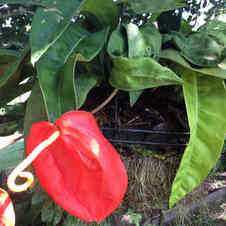Learning about indoor plants
Best indoor plants to help clean pollutants from the air (NASA):
-
Bamboo palm (Chamaedorea seifrizii)
-
Chinese evergreen (Aglaonema)
-
English ivy (Hedera helix)
-
Gerbera daisy (Gerbera jamesonii)
-
Janet Craig (Dracaena fragrans "Janet Craig")
-
Marginata (Dracaena marginata)
-
Mass cane/corn plant (Dracaena fragrans "Massangeana")
-
Mother-in-law's tongue (Sansevieria)
-
Pot mum (Chrysanthemum morifolium)
-
Peace lily (Spathiphyllum )








Benefits of indoor plants are:
-
Plants can help reduce stress as they contribute to positive changes in muscle tension and heart activity. They contribute to lowering blood pressure and boosting mental health
-
Reducing carbon dioxide levels. Plants let Carbon dioxide in, water and oxygen out. Thus cleaning the air. Carbon Dioxide is found in car fume and is a major contributor to green house emissions. Humans breathe in the oxygen and breathe out carbon dioxide.
-
Help lower noise pollution. Outside or inside you can make barriers of plants to deter noise.
-
Increasing humidity (by letting Carbon dioxide in and water out)
-
A study by NASA/ALCA concluded they are able to help clean the air of toxins such as:
-
Benzene present in glues, paints, furniture wax, and detergents. Benzene long time detrimental effects are the reduction of red blood cells and causes harmful effects on the bone marrow.
-
formaldehyde
-
nitrogen oxides
-
-
They can help reduce the "sick building syndrome". Modern buildings are energy efficient, but this also means they trap toxic gases and air-borne contaminants such as pollen, mould, bacteria, and viruses that grow in air conditioners and floors and prevent them from escaping. People working in areas where the air is stale and the circulation poor, may experience headaches, nausea, fatigue, sore throat, and eye irritation.
It is recommended using one plant per 10 sqm to clean the air.
Indoor Plants in their natural habitat
Indoor Plants are plants that usually grow in places with humid and mild temperatures all year. That's why they thrive indoors in places that can replicate those conditions.




















